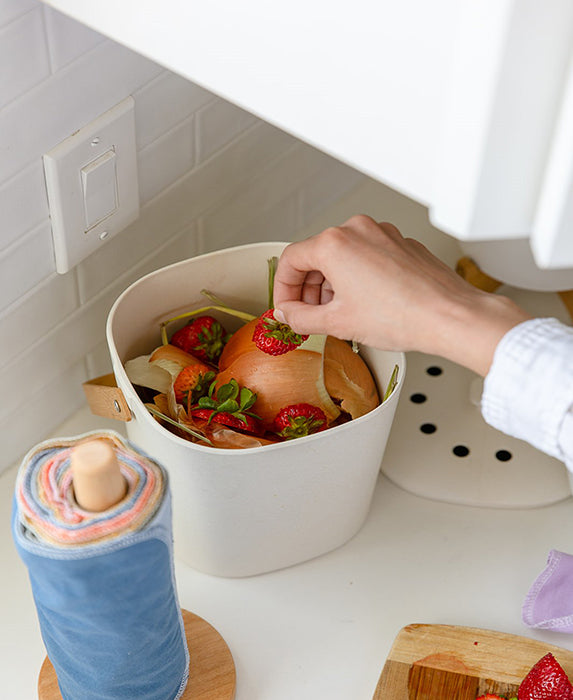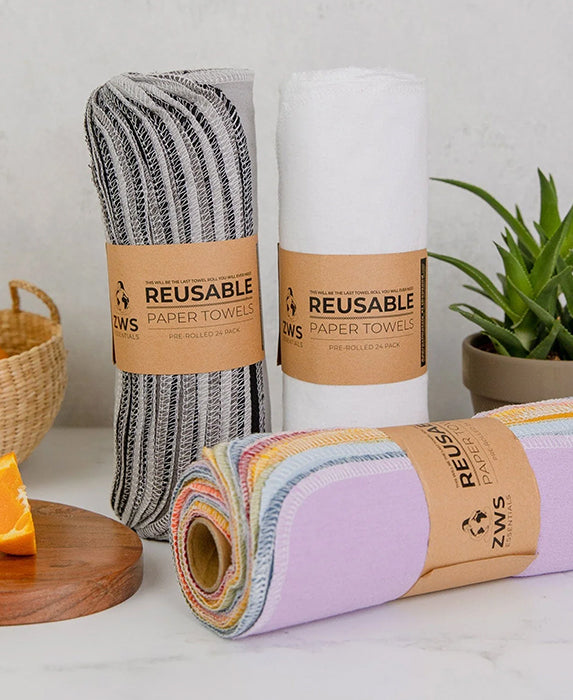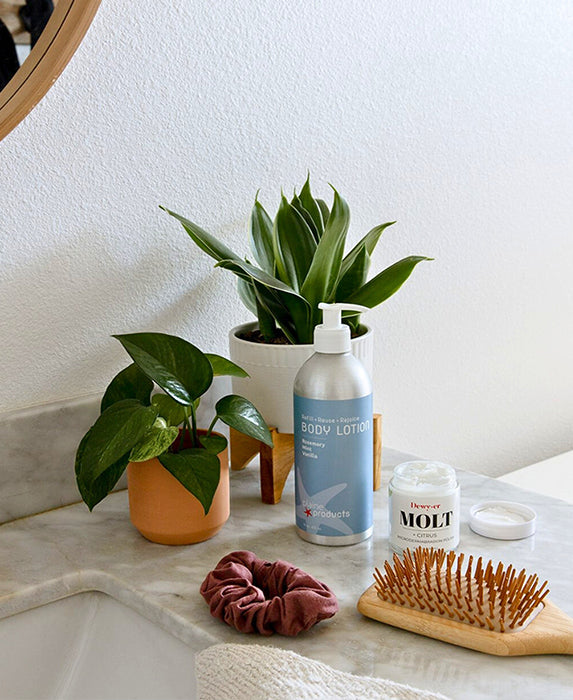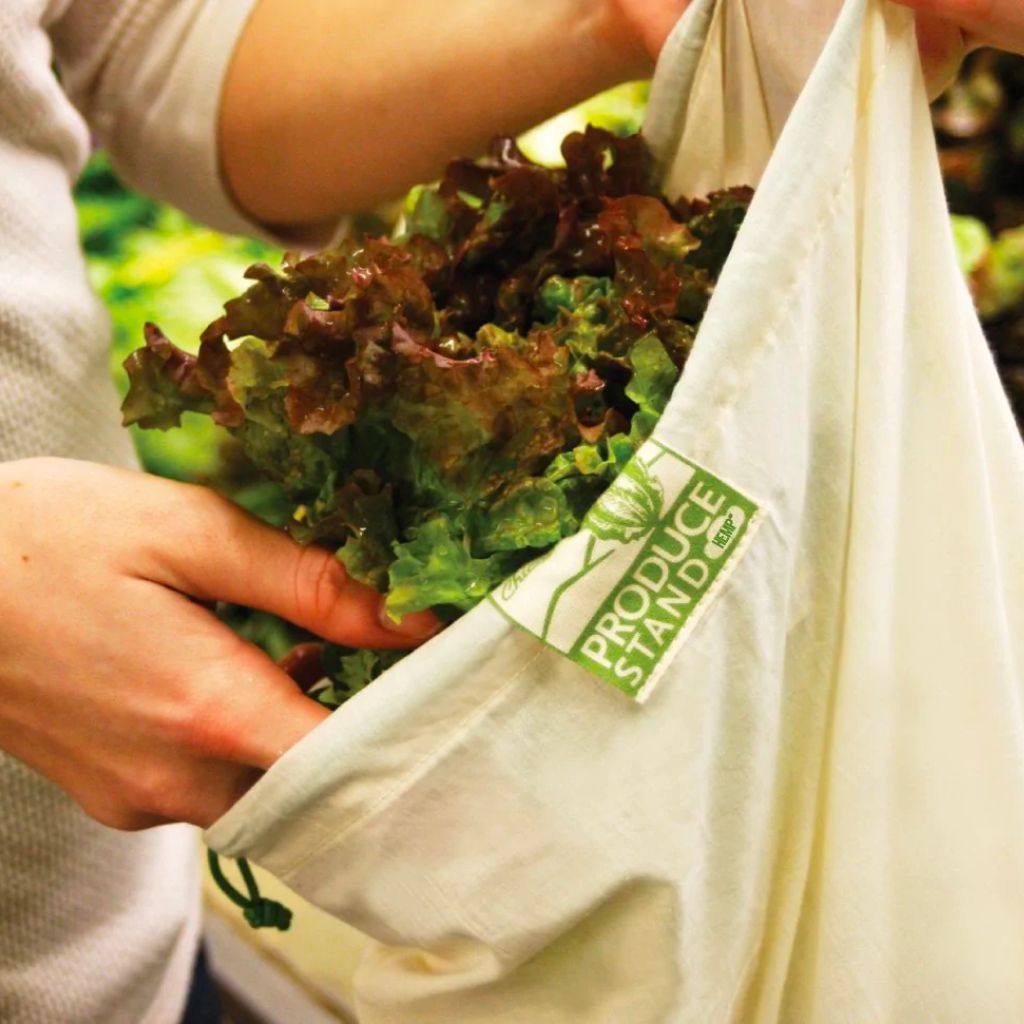The concept of producing “zero waste” has received a lot of buzz in recent years. But what is it? Does it really mean producing zero trash? Is zero waste even possible in today’s world?
Living a zero waste lifestyle is a journey, and it probably won’t happen overnight (in fact, we can pretty much guarantee that). But lucky for you, there are tons of ways that you can shift towards zero waste with a couple of quick, easy, and fun changes! From tackling zero waste living in your home and kitchen, to on-the-go, you’ll be surprised how fulfilled you can feel after minimizing your lifestyle. Read on to learn what zero waste means, why it’s becoming popular, and how you can get involved in the movement.
It’s time for a change!
It’s no joke that we live in a world that revolves around consumption. Commercials, advertisements and celebrities are always telling us to buy the next thing. And then a week later, they’re promoting the “newest version”, and before you know it, you’ve entered a vicious cycle. The thing is, many of us buy into it, and this ever-increasing consumption comes with a hefty price. Now, more than ever before, our precious “stuff” is ending up in landfills (on average, 4.4lbs of trash per person every day!), and most people don’t even realize there’s a problem–out of sight, out of mind, right?
Food, clothes, gadgets and gizmos; basically everything you could possibly imagine ends up in our trash cans. But then where does it go? Straight to the landfill, where it contributes to all sorts of nasty issues, like seeping chemicals into groundwater, emitting toxic gases that contribute to climate change and increased greenhouse gases, and wasting the energy and resources that created what was thrown away in the first place. But there is a better way, and it’s called zero waste living.
What is Zero Waste?
There’s a growing movement of people around the world taking measures into their own hands, coming up with tips and tricks to reduce, reuse, refuse, repurpose, and recycle everyday items. Their goal is simply to send the least amount of things to the landfill by shopping, and living, conscientiously– which often means saying “no” to things that can’t be recycled or composted at the end of its life.
Being part of the solution starts with reducing your own impact, and continues with finding ways to reverse some of the damage thats already been done. By mirroring nature’s sustainable cycles, zero-wasters aim to reduce what’s sent to landfills by turning discarded materials into new, usable resources. They reduce what they need, reuse what they can, recycle what they must, and compost everything else, which leads towards a more “circular mindset.” We only get one planet, and zero-wasters are dedicated to making it last!
Here’s the thing: you don’t need to produce zero trash to be “zero waste”. In a world filled with single use plastics and shrink wrapped samples, even the most dedicated zero waste stars are bound to find unavoidable waste. It’s all about taking small steps and doing your best to cut out unnecessary waste any way that you can, and not giving up when the odds aren’t in your favor.
The Movement
The zero waste movement is not about getting all your trash to fit into a mason jar (though that’s pretty neat to us!) The truth is, those who strive to live a zero waste lifestyle only want to inspire others with their dedication, and give us the tools on how they do it, so we can too. It doesn’t stop at individuals, however! The zero waste movement is gaining recognition through laws, regulations, and commitments from organizations and cities across the nation, as the world begins to wake up to the plastic crisis we’ve created.
Many zero-wasters recognize Bea Johnson as the pioneer for the zero waste lifestyle movement. In 2008, she adopted a zero waste lifestyle with her family of 6, and in 2013 she released the book “Zero Waste Home” which some have touted as the “zero waste bible.” She also runs a blog and even has some Youtube videos, sharing her adventures as a mom of four and sustainability entrepreneur.
Another zero waste inspiration, Andrea Sanders, founded her nonprofit Be Zero in our local town of Boulder to educate and inspire people to make less trash. Through community outreach, workshops, outdoor cleanups, and blog, Sanders and the Be Zero team walk us through everything from waste free cooking to how she manages day to day life without creating trash.
Many attribute the rapid growth of the movement to the internet and the rise of social media. This is partly because many well-known zero wasters have been noticed for sharing their stories, hacks, DIYs and shopping endeavors via YouTube, Instagram, Twitter, Facebook and personal blogs. But, influencers aren’t the only ones making a serious commitment to this lifestyle. Corporations, cities, and even countries are beginning to recognize zero waste as a legitimate solution for plastic pollution and climate damage, and create systems that make living zero waste even easier. Certain cities like Washington DC have a plastic bag tax, financially encouraging customers to bring their own reusable bags to stores and shops. Even Starbucks has promised to phase out their single-use straws for a straw-less cup option, which is a huge win for everyone tired of saying “No straw, please” on repeat.
How to get involved!
What’s awesome about incorporating a zero waste lifestyle is that you make the journey unique to your needs. Love using a straw? Switch from single-use to reusable. Fine going totally straw-less? That’s cool too. The first step to making less waste is doing something we call a “waste audit”–which means going through your trash and taking inventory of where most of your waste comes from. For those of us who go out to eat often, this may mean an abundance of Styrofoam takeout containers and single-use utensils–all of which cannot be recycled. For others, this might mean a lot of food waste that could otherwise be composted. Whatever you find during your waste audit, there is likely a sustainable swap–from zero waste laundry items, to school & office supplies.
After you’ve completed your waste audit and identified where the bulk of your trash is coming from, the next step is building sustainable habits to slowly begin to reduce that waste. It does help to start with some zero waste living products, but, with some items you already have at home and a little creativity, you can DIY your own zero waste essentials! But the most important part of truly creating change is by changing your daily habits. If you get a cup of coffee each morning, adjust your habits to always bring a reusable coffee mug to the cafe. If you love splurging on makeup and clothes, try to be a more “conscious consumer” and only buy what you truly need–bonus points if they’re made out of sustainable materials too (shop plastic-free beauty here!)! As we’ve said, a zero waste lifestyle is a journey, and cannot be done in one day. It starts with awareness and education, and the power of daily decisions.
This month, and every March at EarthHero, we’re challenging you to go zero waste with us! Throughout the month of March, we’ll be releasing tips, tricks, challenges, and our own personal experiences trying to make less trash–starting with an intro to the movement, then lessons on how to reduce waste in your home, kitchen, and on-the-go. Changing lifelong habits can seem daunting and overwhelming, but we’re here to make it as easy as possible.
We want to show you that living sustainably doesn’t have to be hard, expensive, time consuming, or inconvenient. Want to know how to make less trash at home? Coming right up! Single use on-the-go items got you down? Look no further! Tired of wasting food in the kitchen? We’ve got that covered too! With a little practice and some everyday hacks, you’ll be on your way to waste reduction in no time!
So, how do YOU live a zero waste lifestyle? Share your tips with the hashtag #ZeroWasteMarch and tag @ShopEarthHero on Facebook and Instagram! Then, check out our top zero waste products to get you started on your journey here!
This blog was originally posted on March 1, 2018, and was last updated on March 4, 2022.












